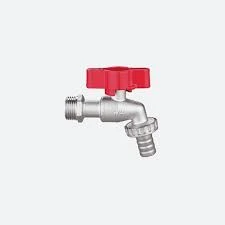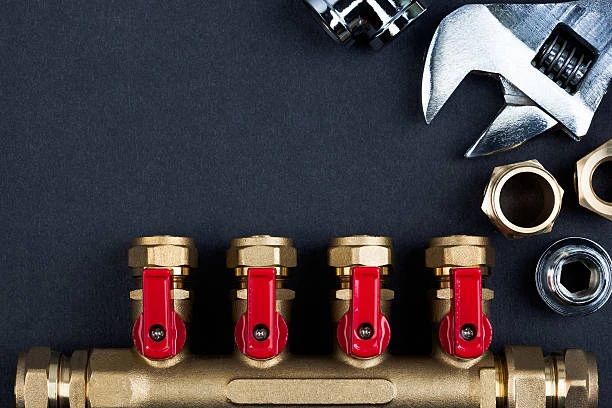Low water pressure in outdoor faucets can be frustrating, especially when you’re trying to water your garden, wash your car, or perform other outdoor tasks. Whether it’s a slight reduction in flow or a significant drop in water pressure, this issue can make routine tasks take longer or become more difficult. Fortunately, fixing low water pressure in outdoor faucets is usually straightforward once you know what to look for.
In this expert problem-solver guide, we’ll walk you through the common causes of low water pressure in outdoor faucets and provide step-by-step instructions on how to fix the issue. From simple DIY solutions to more complex fixes, this guide will help you restore optimal water flow to your outdoor faucets.
Why Does Low Water Pressure Happen in Outdoor Faucets?
Before diving into fixes, it’s important to understand why low water pressure happens in the first place. Low pressure can stem from various sources, including problems within the faucet itself, issues with the plumbing, or even external factors. Understanding the root cause will help you determine the right solution.
Here are some common reasons for low water pressure in outdoor faucets:
- Clogged aerator or nozzle: Over time, debris, dirt, and mineral deposits can build up in the aerator or nozzle, restricting water flow.
- Blocked hoses: If you’re using a hose connected to your faucet, a kink, block, or buildup of debris in the hose could limit the flow.
- Internal pipe issues: Low water pressure could be caused by corroded or blocked pipes leading to the faucet, especially if the faucet hasn’t been used in a while.
- Valve issues: The shut-off valve inside the house may not be fully open, limiting the water flow to the faucet.
- Water supply problems: Sometimes, low water pressure could be a symptom of an issue with the main water supply, particularly if other faucets inside your home are also affected.
Step-by-Step Guide to Fix Low Water Pressure in Outdoor Faucets
If you’re experiencing low water pressure at your outdoor faucet, follow these expert-approved steps to troubleshoot and fix the problem.
1. Check the Hose for Blockages
If you’re using a hose with your outdoor faucet, the hose could be the culprit. Common hose issues include kinks, blockages, or debris buildup that obstruct the water flow. Here’s how to check:
- Inspect the hose: Look for any visible kinks, twists, or bends in the hose that might be restricting the water flow.
- Clear blockages: Disconnect the hose and check the nozzle and the hose for any clogs. Sometimes dirt, leaves, or mineral buildup can obstruct the flow. Use a thin wire or hose-cleaning tool to clear any debris.
- Check for leaks: Even small leaks in the hose could cause a noticeable drop in pressure. Inspect the hose for holes or splits and replace the hose if necessary.
2. Clean the Aerator or Faucet Nozzle
Aerators, which are the small screens attached to the spout of your outdoor faucet, can accumulate minerals and debris over time, which can reduce water flow. Cleaning or replacing the aerator is one of the quickest and easiest fixes for low water pressure.
To clean the aerator:
- Unscrew the aerator: Use a wrench or pliers to gently unscrew the aerator from the end of the faucet spout.
- Inspect for debris: Check the aerator for visible buildup of mineral deposits, dirt, or debris. Soak the aerator in white vinegar for a few hours to dissolve mineral deposits.
- Clean with a brush: After soaking, use an old toothbrush or small brush to scrub away any remaining debris.
- Reassemble the aerator: Once cleaned, reattach the aerator to the faucet and turn the water on to check the flow.
3. Check the Shut-off Valve Inside the House
Outdoor faucets are usually connected to a shut-off valve inside your home that controls the water flow to the faucet. If this valve is not fully open, it can restrict water flow and cause low water pressure.

To check the shut-off valve:
- Locate the valve: The shut-off valve is often found in a basement, crawl space, or utility room. It’s typically located near the point where the water pipe exits the house to supply the outdoor faucet.
- Ensure the valve is fully open: Turn the valve counterclockwise to ensure that it is fully open. If the valve is only partially open, it will limit the amount of water that flows to your outdoor faucet.
- Test the water pressure: Once the valve is open, turn on the outdoor faucet to see if the water pressure has improved.
4. Inspect for Leaks in the Pipes
If the water pressure remains low after checking the hose and valve, it could be a sign of a leak or blockage in the plumbing leading to the outdoor faucet. Leaking or corroded pipes can cause water pressure to drop.
To inspect the pipes:
- Look for visible leaks: Check around the faucet’s connection to the house for any signs of leaks, damp spots, or corrosion.
- Check underground pipes: If you have outdoor pipes buried underground, you may need to dig up the area to check for leaks or damage.
- Call a plumber if necessary: If you notice significant damage or suspect a hidden leak, it’s best to call a licensed plumber to inspect and repair the pipes.
5. Flush the Outdoor Faucet’s Water Supply Line
If you suspect that debris or mineral buildup in the water supply line is causing the low pressure, flushing the supply line might solve the problem. This can be done by removing the faucet’s aerator and turning the water on full force to flush out any blockages.
To flush the line:
- Remove the aerator: Unscrew the aerator from the faucet.
- Turn on the faucet: Open the faucet fully to let the water run through the line for a few minutes.
- Check for debris: Observe the water flow to see if it clears up any debris or sediment that might be clogging the pipe.
- Reinstall the aerator: Once the line is flushed, reattach the aerator and check the pressure.
6. Consider Installing a Pressure Regulator
If the water pressure is consistently low in all outdoor faucets, it could be due to low pressure coming from the main water supply. In this case, installing a pressure regulator can help improve the water flow to your outdoor faucets.
A pressure regulator can be installed on the main water supply line to control and maintain a consistent pressure to the faucets. You may want to consult with a plumber to determine if this is the best solution for your home.
When to Call a Professional Plumber
If you’ve tried all the troubleshooting steps and the water pressure is still low, it might be time to call a professional plumber. Low water pressure can sometimes be caused by deeper issues, such as:
- Underground pipe leaks: Leaks in underground pipes may not be visible and can only be detected by a professional.
- Corrosion in older pipes: Over time, pipes can corrode, leading to restricted water flow. A plumber can inspect your pipes and recommend a solution.
- Issues with the main water supply: If low water pressure is affecting multiple faucets in your home, the issue could lie with the water supply, requiring professional attention.
Conclusion
Low water pressure in outdoor faucets is a common issue that can often be fixed with a few simple steps, such as cleaning the aerator, checking the hose for blockages, or ensuring the shut-off valve is fully open. However, if the problem persists, it may be a sign of more serious plumbing issues, such as leaks or blockages in the pipes. By following this expert problem-solver guide, you can troubleshoot the issue and restore proper water pressure to your outdoor faucets.
Frequently Asked Questions (FAQ)
Why is my outdoor faucet not getting enough water pressure?
Low water pressure in an outdoor faucet can be caused by a clogged aerator, a blocked hose, a partially closed shut-off valve, or problems with the plumbing leading to the faucet.
How can I clean the aerator on my outdoor faucet?
To clean the aerator, unscrew it from the faucet, soak it in white vinegar to dissolve mineral buildup, and scrub it with a brush to remove debris. Then, reattach it and test the water flow.
How do I check for leaks in the pipes leading to the outdoor faucet?
Inspect the area around the faucet for damp spots or visible cracks. For underground pipes, you may need to dig up the area or consult a plumber to check for leaks.
Can I fix low water pressure myself, or should I hire a plumber?
If you are comfortable troubleshooting basic issues like cleaning the aerator or checking the shut-off valve, you can likely fix the problem yourself. For more complex issues, such as leaks in the pipes or problems. With the main water supply, it’s best to consult a professional plumber.
How can I improve the water pressure in my entire home?
If low water pressure is affecting multiple faucets, installing a pressure regulator. On your main water line or checking the water supply system for issues may help improve overall pressure. Contact a plumber for assistance.


















